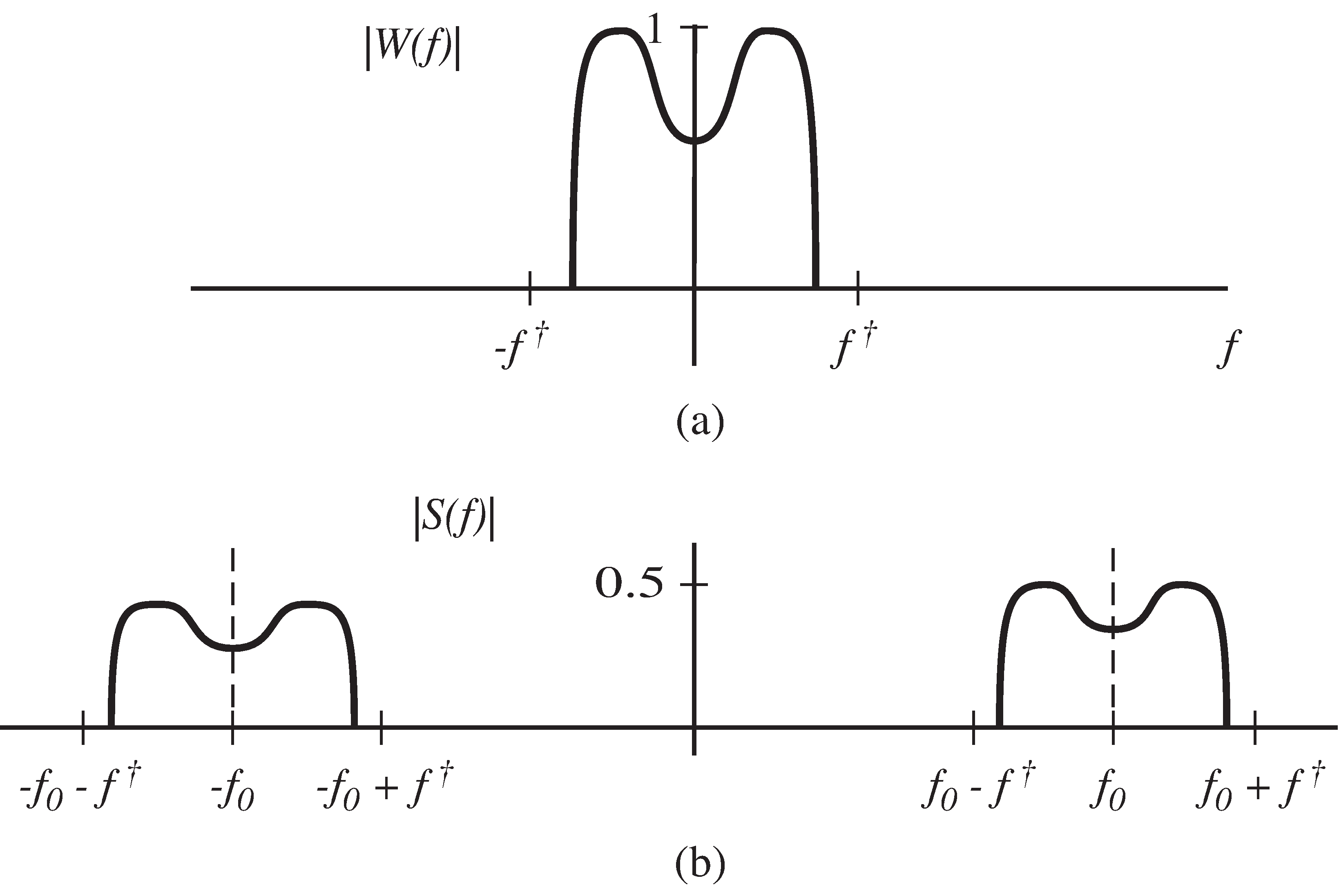| << Chapter < Page | Chapter >> Page > |
Thus, the process of modulation (or upconversion), which requires a change of frequencies, must be either nonlinear or time varying(or both). One useful way to modulate is with multiplication; consider the product of the message waveform with a cosine wave
where is called the carrier frequency. The Fourier transform can now be used to show thatthis multiplication shifts all frequencies present in the message by exactly Hz.
Using one of Euler's identities [link] ,
one can calculate the spectrum (or frequency content) of the signal from the definition of the Fourier transform given in [link] . In complete detail, this is
Thus, the spectrum of consists of two copies of the spectrum of , each shifted in frequency by (one up and one down) and each half as large.This is sometimes called the frequency shifting property of the Fourier transform, and sometimes called the modulation property. [link] shows how the spectra relate. If has the magnitude spectrum shown in part (a) (this is shown bandlimited to and centered at zero Hz or baseband , though it could be elsewhere),then the magnitude spectrum of appears as in part (b). This kind of modulation (or upconversion , or frequency shift), is ideal for translating speech, music, or other low frequency signalsinto much higher frequencies (for instance, might be in the AM or UHF bands)so that they can be transmitted efficiently. It can also be used to convert a high frequency signalback down to baseband when needed, as will be discussed in [link] and in detail in [link] .
Any sine wave is characterized by three parameters: the amplitude, frequency, and phase. Any of these characteristics can be used asthe basis of a modulation scheme: modulating the frequency is familiar from the FM radio, and phase modulation is commonin computer modems. A major example in this book is amplitudemodulation as in [link] , where the message is multiplied by a high frequency sinusoid with fixed frequency and phase.Whatever the modulation scheme used, the idea is the same: a sinusoid is used to translate themessage into a form suitable for transmission.
Referring to [link] , find which frequencies are present in and not in ? Which frequencies are present in and not in ?
Using [link] , draw analogous pictures for the phase spectrum of as it relates to the phase spectrum of .
Suppose that is modulated again, this time via multiplication with a cosine of frequency . What is the resulting magnitude spectrum?Hint: Let , and apply [link] to find .

When a signal is modulated, the width (in Hertz) of the replicasis the same as the width (in Hertz) of the original signal. This is a direct consequence of [link] . For instance, if the message is bandlimited to , and the carrier is , then the modulated signal has energy in the range from to and from to . If , then several messages can be transmitted simultaneously by using differentcarrier frequencies.

Notification Switch
Would you like to follow the 'Software receiver design' conversation and receive update notifications?